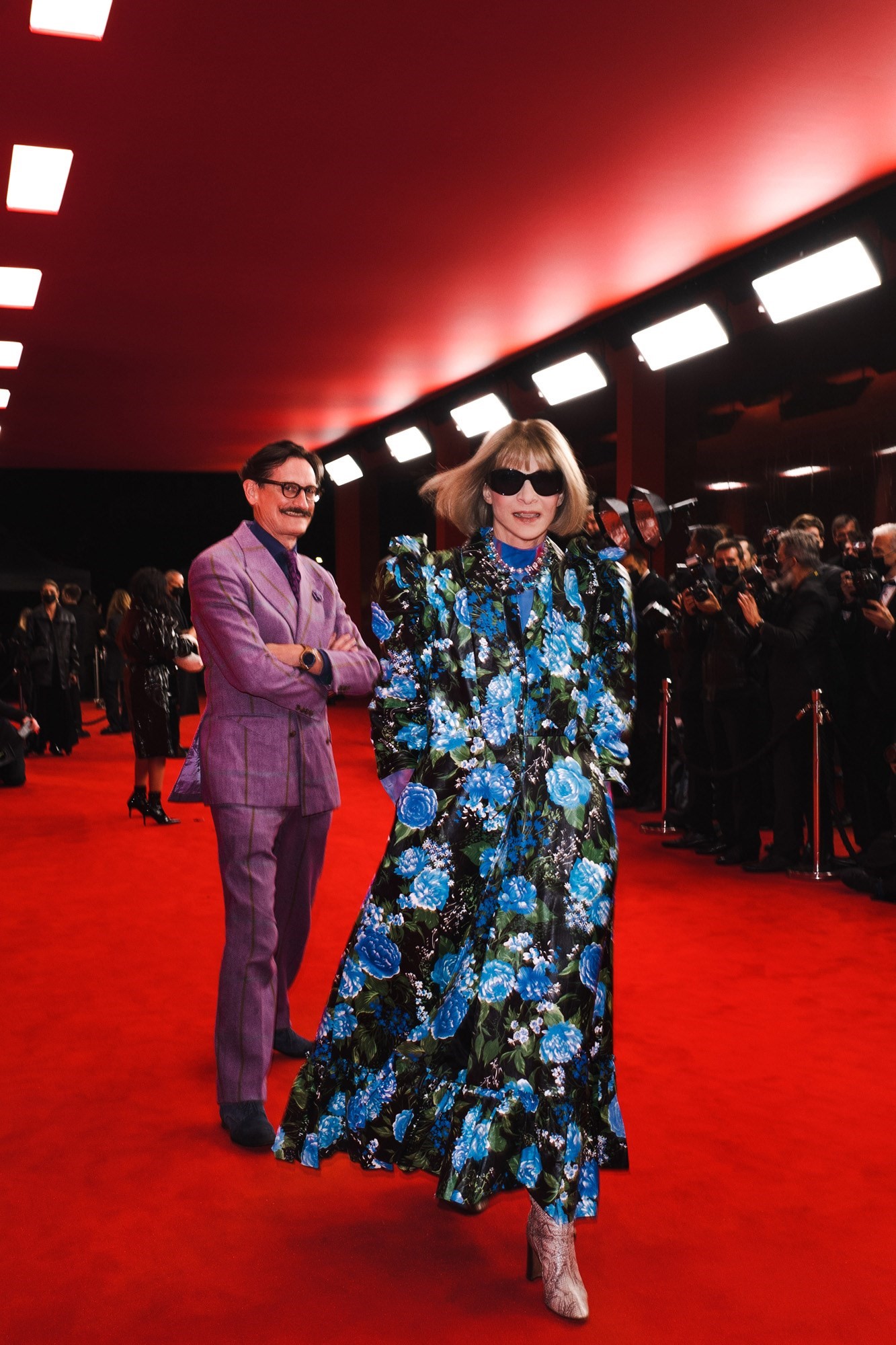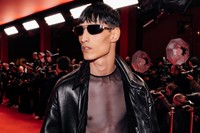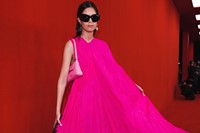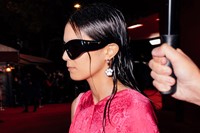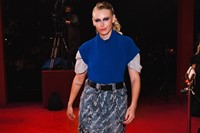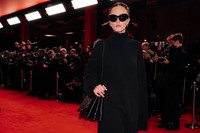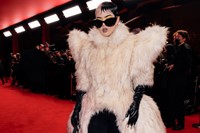“Did you laugh?” It’s not what most fashion designers ask the audience after a show, at least not with the implication that it’s a positive thing. But Demna Gvasalia rarely approaches fashion in a linear or conventional manner. So after an haute couture debut of solemnity and severity, Gvasalia returned to the Paris Spring/Summer 2022 ready-to-wear with a fashion show that really wasn’t a fashion show, one that upset and upended expectations and conventions, while also – slyly – turning a mirror on the industry itself.
There have been articles aplenty written on the notion of the red carpet – of premieres, award ceremonies and of course the Metropolitan Museum’s Costume Institute Gala – as the new catwalk. The public at large care far more about what famous people actually wear than what fashion designers think ordinary people should put on their backs, that much is undeniably true. So Gvasalia harnessed that power as a vehicle for his clothes, creating a buzzy premiere scene at the Théatre du Châtelet – complete with thronging crowds and stalled traffic – where, covertly, his Balenciaga collection debuted.
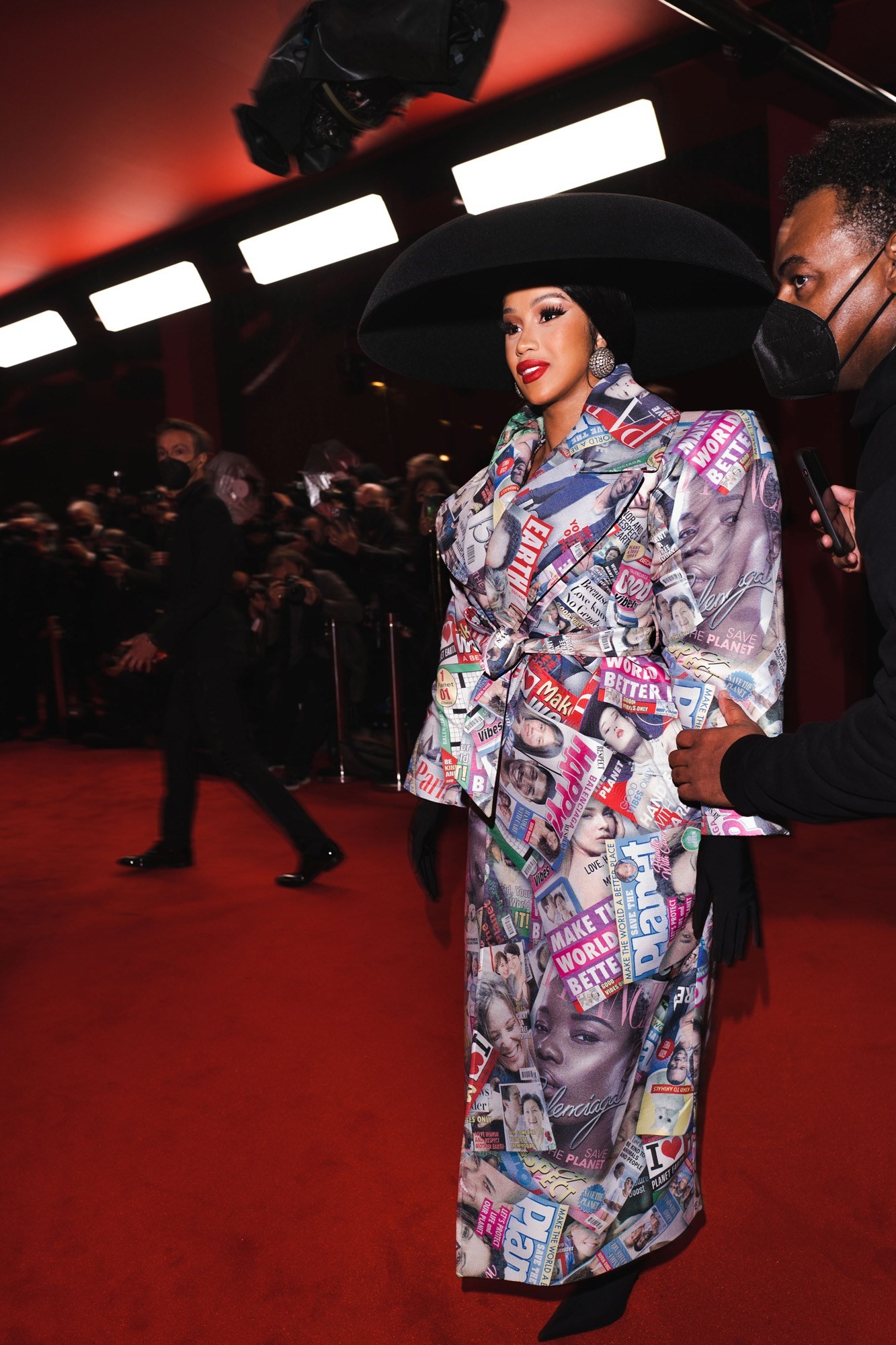
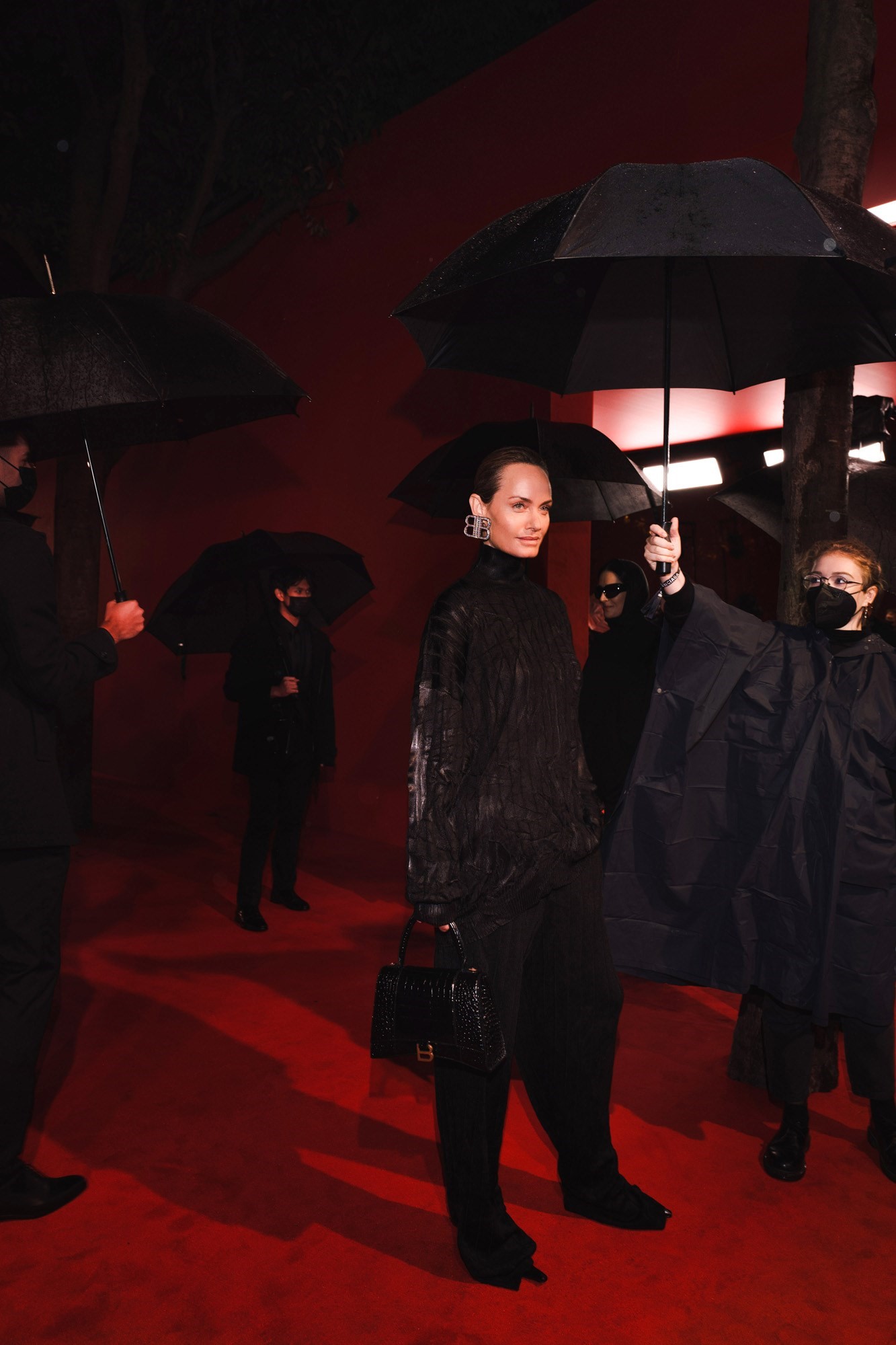
It debuted alongside red carpet turns from celebrities, influencers, and unsuspecting fashion figures – footage of them all projected cinema-scope sized inside for the waiting audience. As a psychological study of the fashion industry’s reaction to scrutiny, it was fascinating. It reminded me of Lee Alexander McQueen’s ‘Voss’ show, in the autumn of 2000, where the audience were forced to wait, staring at their own reflections in a mirrored box (later, of course, the two-way mirror switched to the inside). Many noted at the intensity of that experience, how people cowered from confrontation with their own image. The difference 21 years later was how many of the fashion press embraced being public figures, happily posing and preening for cameras.
The Balenciaga clothes were, often, created for posing and preening too: vast, elaborate and amazing ballgowns, slinkily elegant evening dresses, the rapper Cardi B modelling a moulded coat emblazoned with paparazzi-style gossip magazine covers. Other celebrity models included the actors Isabelle Huppert and Elliot Page – and model celebrities Amber Valetta and Naomi Campbell. Who are now personalities larger than fashion. They all, later, walked into the theatre and took their seats, as if part of the audience. The models who elicited the longest, loudest cheers, however, were Balenciaga team members – hurrahed by their colleagues, who stamped their feet and bayed at the screen as if they were the biggest stars of all. There was something heartwarming and real about that.
You assumed the screening was about this – the clothes, the industry, the celebrity. But then the curtain came up on a socially-created episode of The Simpsons, themed around a Balenciaga show (of course). It was meta – fashion transformed into pop culture in the truest sense of the term. But, for all the pontificating, it did make everyone laugh, just as Gvasalia wanted. And, also, it left you with kind of a warm feeling: because it was, as with so many shows this season, about the joy of bringing people together under one roof, to celebrate creativity and ingenuity and – with those stamping and shouting Balenciaga atelier workers and design team members – the power and energy of community, which is what the best kind of fashion is really all about.
